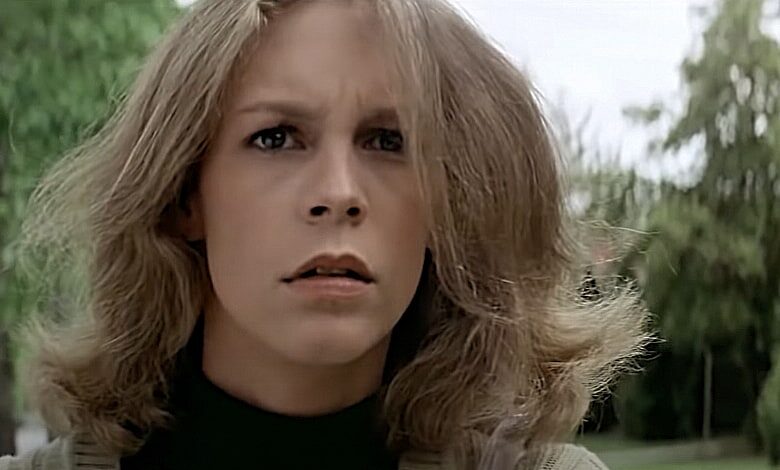Here’s What You Didn’t Know About ‘Halloween’
John Carpenter's horror classic won't die, but here's the secret to how it all began

John Carpenter jump-started the slasher genre, for better and decidedly worse, with 1978’s “Halloween.”
The horror hit created the mold that other, inferior features giddily followed. For every clever spin on the blueprint (“A Nightmare on Elm Street” rushes to mind) there were dozens more that wallowed in blood, guts and amateur hour acting.
Carpenter’s saga, like its signature villain, can’t be killed. “Halloween Kills,” appropriately enough, arrives this month in theaters and Peacock.
It’s a good excuse to remember how “Halloween” came to be, from the film’s initial title to the origins of that perfectly creepy mask.
To do so, we turn to the film’s 35th anniversary Blu-ray edition and the accompanying fact sheet that shares more about the film that changed horror forever.
The movie’s working title might have stopped Michael Meyers in his bloody tracks.
“The Babysitter Murders” sounds like a quickie Lifetime Movie, not an iconic portrait of evil. That name stuck for a while until producer Irwin Yablans suggested a setting change – Halloween night, to be precise. The shift wouldn’t dramatically impact the budget – set at a frighteningly low $300,000.
Its impact on pop culture, however, proved profound.
FAST FACT: Carpenter took a modest salary in exchange for a percentage of the film’s profits, a very wise move in retrospect.
Cinematographer Dean Cundey (“Jurassic Park,” “Who Framed Roger Rabbit”) used the recently established Steadicam to capture some of the film’s action, making us feel like we were right behind the murderous “Shape.”
That’s the name in the credits for Michael Myers.
Tommy Lee Wallace, a Carpenter regular who would later direct “Halloween III: Season of the Witch,” did more than don multiple hats on the set. He secured the iconic mask Michael wore as he sliced and diced his way to Laurie Strode (Jamie Lee Curtis, in just her second film role).
Carpenter sought out two British icons to play Dr. Loomis, the psychiatrist who knew better than anyone else what could happen if Michael Myers went free. Both Peter Cushing and Christopher Lee passed on a role that went to Donald Pleasance, who ended up playing the frazzled doctor in four more Halloween movies.
Co-producer and co-screenwriter Debra Hill, Carpenter’s partner at the time, figured Curtis’s family ties could only boost the film’s publicity machine. The daughter of “Psycho” standout Janet Leigh in a new horror film?
The copy wrote itself.
It helped that Carpenter liked the young actress’ audition for the role, and a Scream Queen was born. She appeared in several more “Halloween” sequels as well as “Prom Night” and “The Fog.”
One horror movie trope “Halloween” helped inspire? Have sex, end up dead.
It became a recurring theme in follow-up films, but Carpenter didn’t have that morality play in mind while fashioning his slasher opus.
The 20-day “Halloween” shoot went as expected, with Carpenter chum Nick Castle playing Myers, AKA The Shape. The director kept the monster’s gait surprisingly human, even if he never sprinted toward his prey.
It’s another slasher movie trope that stuck. The bogeyman never runs but always manages to keep pace with his victims.
Carpenter famously kept The Shape’s motivations and background a mystery. He was pure evil, a supernatural force that couldn’t be stopped with knives or bullets. It’s the opposite approach director Rob Zombie embraced with his 2008 “Halloween” remake, a film that couldn’t capture the same sense of horror the original effortlessly shared.
The same proved true of its sequel, “Halloween II” (2009).
RELATED: 16 Can’t Miss Horror Movies on Tubi
And then there’s the film’s score. Carpenter wrote the music in just three days, composing material from a variety of moods he hoped to patch together in the editing room.
It worked.
He later called it a “cheap but effective way of scoring” in an NPR conversation tied to the 2018 film rebooting his beloved property.
Halloween opened on Oct. 25, 1978 in Kansas City, Miss. of all places. New York, Los Angeles and Chicago soon followed before it went wide, grossing $70 million before its U.S. run wrapped.
View this post on Instagram
“Halloween Kills” will be the second film in the rebooted saga, but the 12th film counting every official “Halloween” feature.
We already know “Halloween Ends,” slated for a 2022 release, is heading our way soon. And, despite that title, there’s little chance Michael Myers will have stalked his last victim by then.

>>Here’s What You Didn’t Know
>>About ‘Halloween’
The mask was of Captain Kirk.